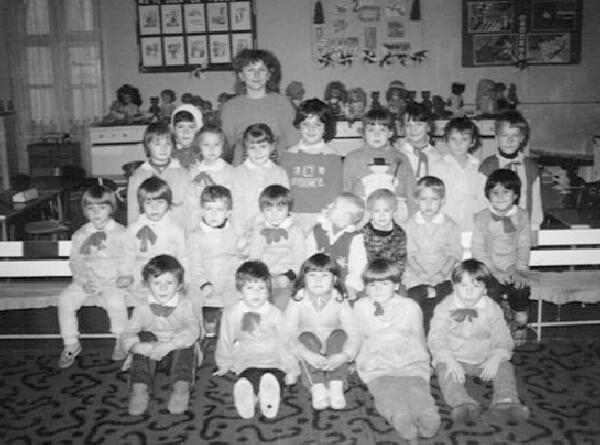
Figure 1.--Here we see a unidentified pre-school class in 1978. The children wear smocks which suggests that it may be an Italian class. |

|
Pre-schools and Kindergartens appeared in the 19th century as inovative educators began to assess the learming process as it realted to younger children. The Swiss educator Johann Heinrich Pestalozzi (1746-1827) was one of the first to recognize how important playing is for young children.
The first Kindergartens were introduced by Friedrich Fr�bel (1837). Fröbel must have known about Pestalozzi's work. Because Kindergartens proved so important, Fr�ebel became an important figure in educational history, known as "Father of Kindergarten". Fröbel with his Kindergarten developed educational practices that have been widely adopted in pre-school education. Fröebelbelieved that play was an important part of the educational process for younger children. He saw his Kindergartens as places for children to learn from the social interaction with other children. Fröebel wrote a book explaining his theories and practices.
Another great educator was the Italian Maria Montessori (1870-1952). Many kindergartens adopted her guidelines. Margarete Schurz founded the first kindergarten in the United States in 1855. She was the wife of the statesman Carl Schurz, Secretary of the Interior.
There was a first considerable opposition to the new theories, especially the idea that children learned through play. Free Government pre-schools are now available to children in virtually all developed countries, except the United States. Some U.S. states offer free kindergardens, a concept imported from Germany, but many states do not. American parents must pay for private day care--a very expensive under-taking for low-income parents. Low income parents have access to Head Start. Pre-school through kindergarden care for children through about age 5. Some countries include the kindergarden or 5-year olds in the primary schools. Usually uniforms are not required for these children, even in countries where school uniforms are no widely worn. Some countries like Italy, France, and Japan might have these younger children wear smocks.
Careful, clicking on these will exit you from the Boys' Historical Clothing web site, but several are highly recommended
Related Chronolgy Pages in the Boys' Historical Web Site
[Return to the Main chronolgy page]
[The 1880s]
[The 1930s]
[The 1940s]
[The 1930s]
[The 1940s]
[The 1950s]
[The 1960s]
[The 1970s]
[The 1980s]
Navigate the HBC School Section:
[Tryirn to the Main school year/level page]
[About Us]
[Activities]
[Chronology]
[Clothing styles]
[Countries]
[Debate]
[Economics]
[Garment]
[Gender]
[Hair]
[History]
[Home trends]
[Literary characters]
[School types]
[Significance]
[Transport and travel
[Uniform regulations]
[Year level]
[Other topics]
[Images]
[Links]
[Registration]
[Tools]
[Return to the Historic Boys' School Home]
